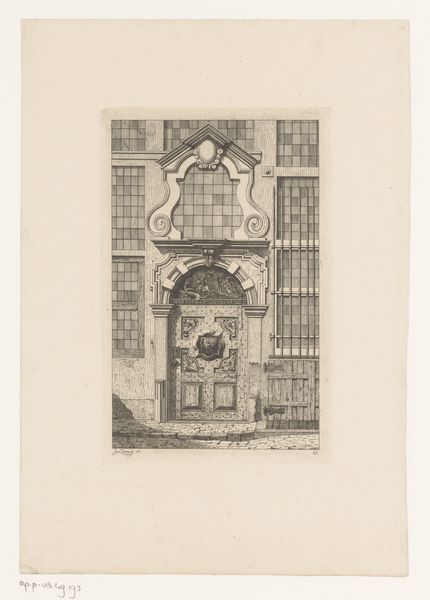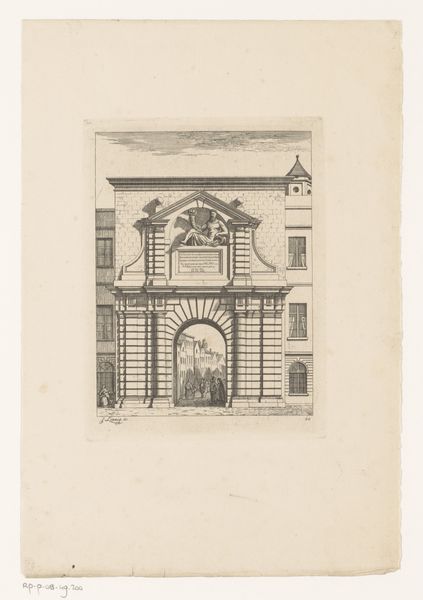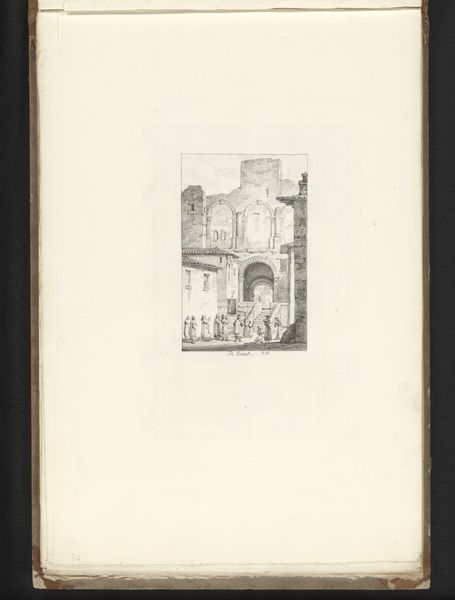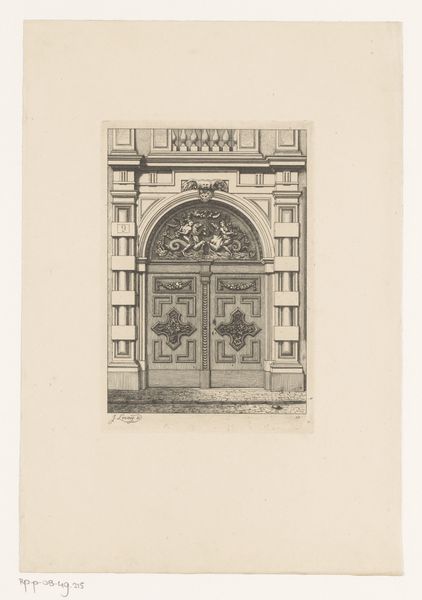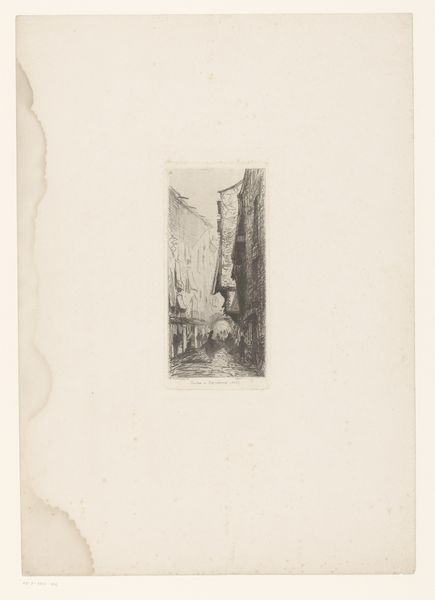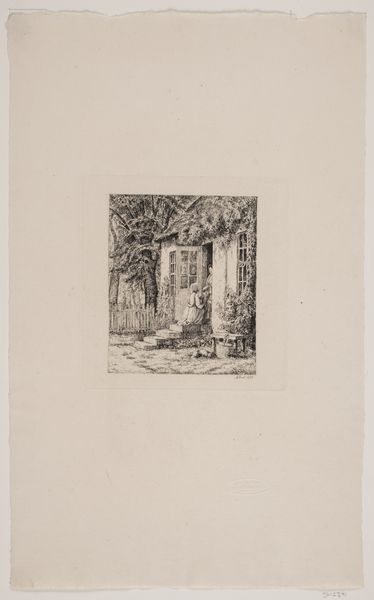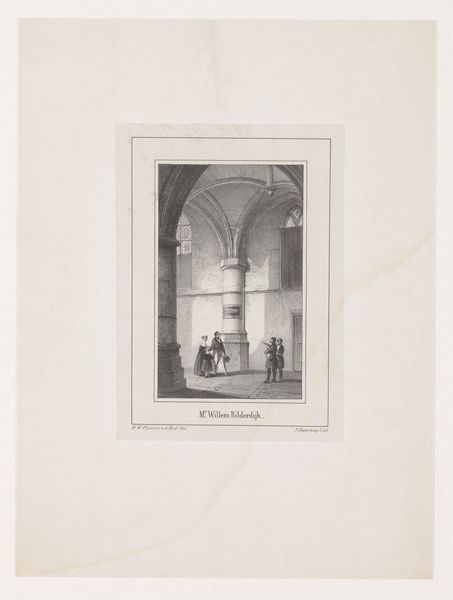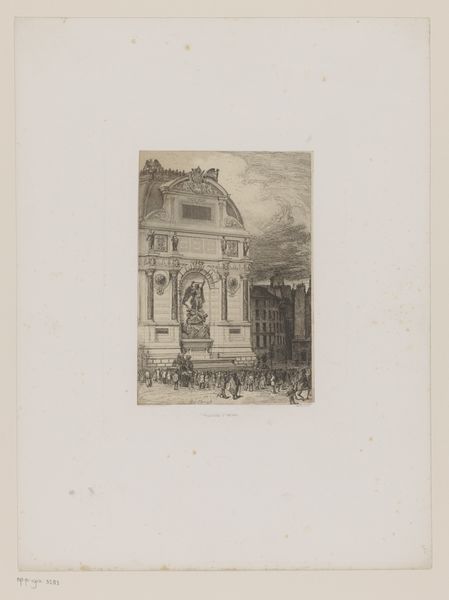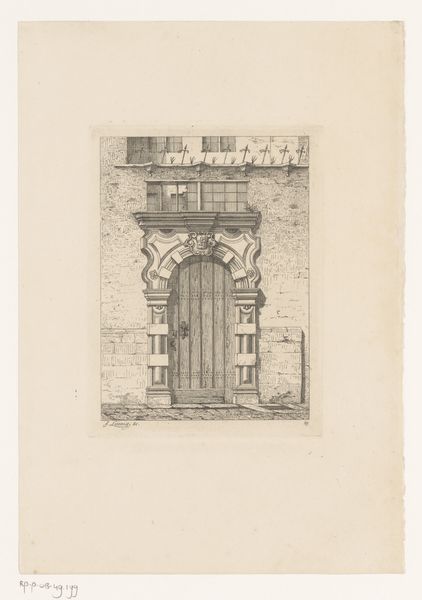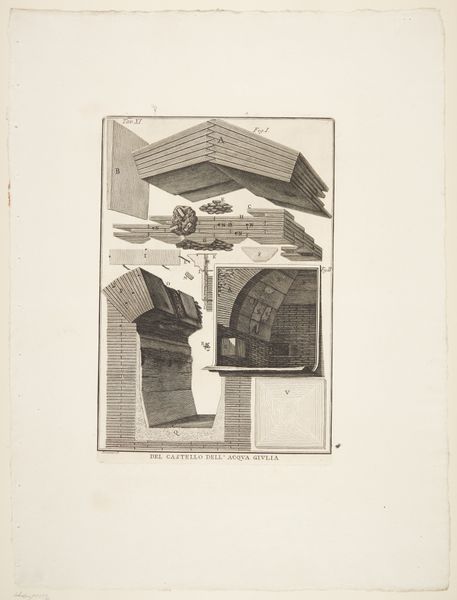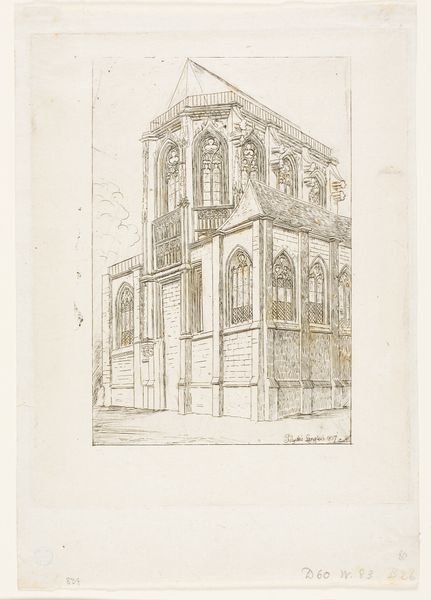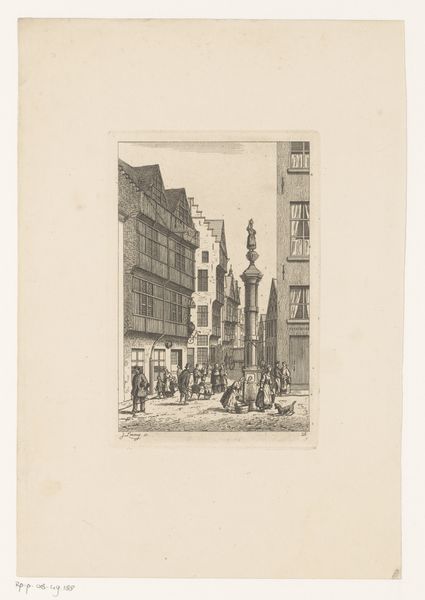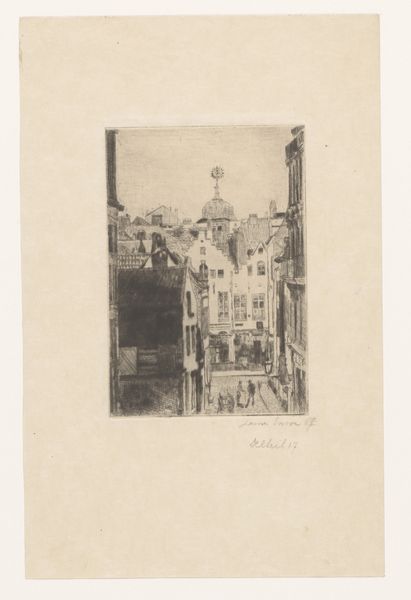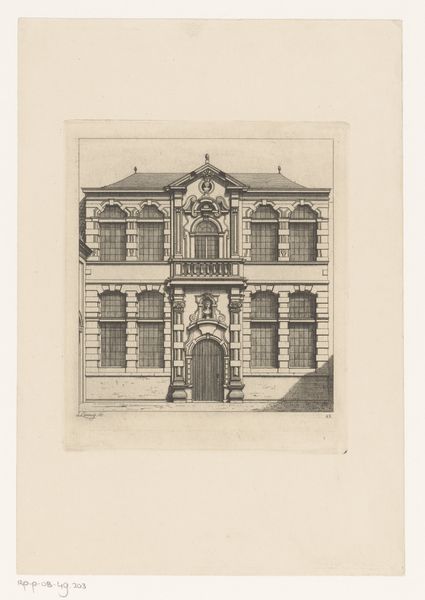
print, etching
# print
#
etching
#
landscape
#
cityscape
#
genre-painting
#
realism
#
building
Dimensions: height 156 mm, width 121 mm
Copyright: Rijks Museum: Open Domain
Curator: This is Jean Théodore Joseph Linnig’s “Ingang van het Sint-Julianusgasthuis in Antwerpen,” created in 1868. It's an etching depicting the entrance of a historical hospital in Antwerp. Editor: There’s something starkly beautiful about the muted tones and detailed line work. It gives the scene a realistic, yet somehow melancholic atmosphere. It makes you wonder about the building materials, how they weathered. Curator: Absolutely. The artist captures the textures of the aged stone and brick so effectively, which is not coincidental. This hospital was a significant charitable institution; such institutions played important roles in civic life. How the institution presents itself physically makes claims about its societal status. Editor: It's fascinating to consider this through the lens of the hospital's function. It brings into focus how spaces, even those dedicated to healing, become material embodiments of the values and social structures of their time. You almost get a feeling of their hardship in their very poses. Curator: Precisely. The figures entering seem burdened. Linnig places these individuals, seemingly ordinary citizens, within the architectural context of social care. What this print shows is how buildings impact individual experiences. The setting contributes to the story that the picture is trying to tell. Editor: Considering the material aspects—etching as a medium allowed for precise detail, really lending itself to realistically portraying buildings in their time. This level of fidelity suggests something almost scientific about the way the image was constructed. The buildings materials were there to be captured as honestly as possible, a sense of reality frozen on the copper. Curator: Linnig's piece reveals more than just the architecture. It makes visible, through art, how the act of charity was visibly and tangibly situated within 19th century Antwerp society. Editor: And that very visibility hinges on the material means available to represent that moment, it highlights social stratification, the work needed to etch the image on the plate. So many material decisions end up capturing society itself in that picture. Curator: An image dense with history, a beautiful blend of the personal and the political. Editor: Yes, a convergence of materials and narratives, solidifying its place in history.
Comments
No comments
Be the first to comment and join the conversation on the ultimate creative platform.
